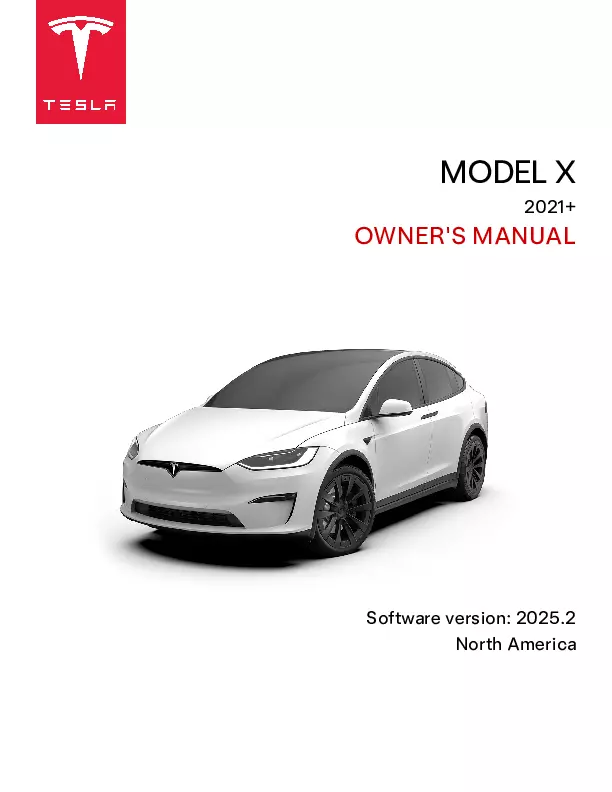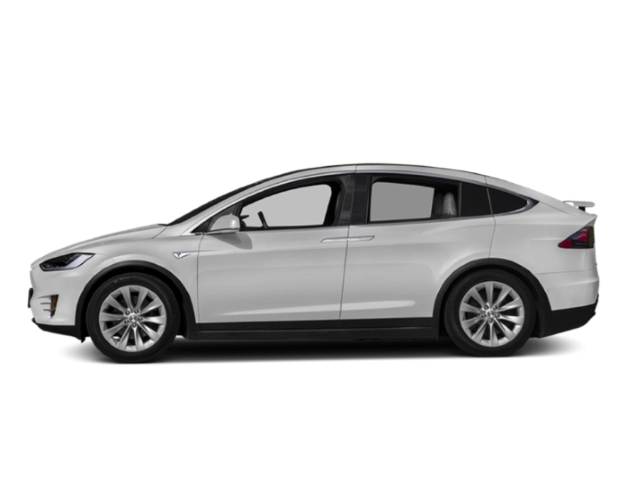2025 Tesla Model X Owner's Manual

Table of Contents
2025 Tesla Model X Overview
Owner's Manual
The 2025 Tesla X owner's manual is an essential resource for every owner, serving as a definitive guide to the vehicle's systems and features. Its purpose is to familiarize you with the functionalities of your Tesla X, ensuring a seamless driving experience. Inside, you’ll find detailed instructions on operation, safety protocols, and troubleshooting tips tailored to the unique engineering of your electric SUV. Understanding how to utilize the advanced technology, including Autopilot and infotainment options, can enhance your relationship with the vehicle, allowing you to maximize performance while prioritizing safety. The manual also outlines maintenance schedules and service procedures, empowering you to keep your Tesla X in top condition. Overall, the owner's manual is a vital tool that enhances your ownership experience and helps you make the most of your innovative vehicle.
Introduction
The 2025 Tesla X embodies the cutting-edge evolution of electric SUVs, offering unparalleled performance, space, and technology. Redesigned for the upcoming model year, it seamlessly combines luxury with practical utility. The Tesla X is designed not only for everyday family transport but also for adventure seekers, boasting impressive towing capacities and state-of-the-art automation. With a premium interior and spacious third-row seating, it caters to comfort while committed to environmental sustainability, making it one of the most desirable electric vehicles on the market.
Powertrains
The 2025 Tesla X offers two dynamic powertrains: the Dual Motor All-Wheel Drive and the Performance variant. The Dual Motor delivers remarkable efficiency with a 0-60 mph acceleration time of just 4.4 seconds, coupled with over 300 miles of range on a single charge. For those seeking power, the Performance model boasts blistering acceleration at 3.8 seconds while also enhancing driving dynamics with upgraded handling features. Each configuration leverages Tesla's advanced battery technology, ensuring that both power and efficiency are at the forefront of the driving experience.
Trims
This model year sees the Tesla X available in three distinctive trims: the Long Range, the Plaid, and the Ultimate. The Long Range trim emphasizes efficiency and range, perfect for long-distance travelers, while the Plaid trim caters to those desiring maximum performance with its turbocharged capabilities. The Ultimate trim features the latest technologies and luxurious interior materials, ensuring an unparalleled blend of comfort and sophistication. Each trim comes equipped with Tesla's suite of safety and convenience features, affirming the brand's commitment to occupant security.
Features
The 2025 Tesla X is loaded with a host of premium features designed to enhance both comfort and connectivity. Standard highlights include an expansive touchscreen display, over-the-air updates, and a state-of-the-art audio system. The Autopilot functionality allows for hands-free driving assistance, while a premium climate control system ensures all passengers are comfortable. With spacious cargo capacity and the signature Falcon Wing doors for effortless accessibility, the Tesla X remains a leader in versatility. Additional options include customizable ambient lighting, heated third-row seating, and an advanced navigation system equipped with real-time traffic updates, making every journey enjoyable and efficient.
User manual download
The Tesla Model X owner manual for the 2025 model year is to be found in PDF downloadable format on this page. The owner manual for the model year 2025 is free and in English, but the repair manuals are usually not easy to get and may cost more.
Manual Questions
Fill the form below and someone will help you!

